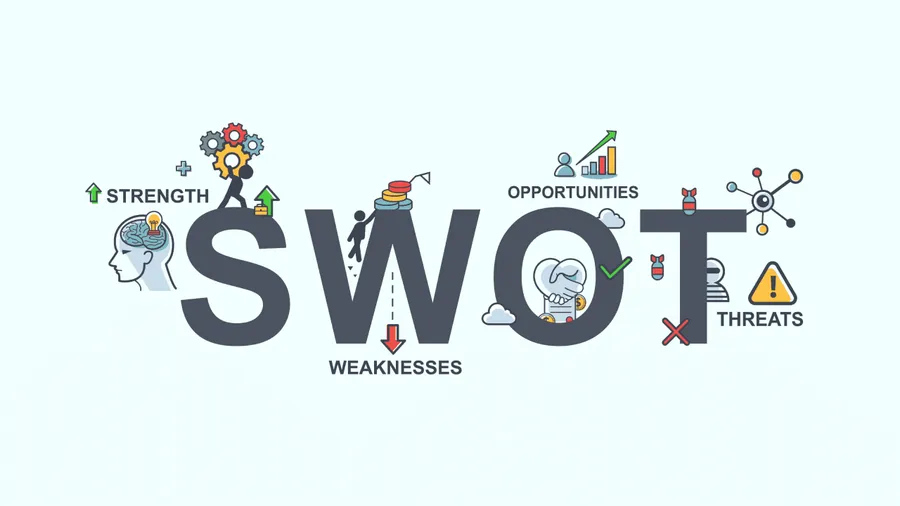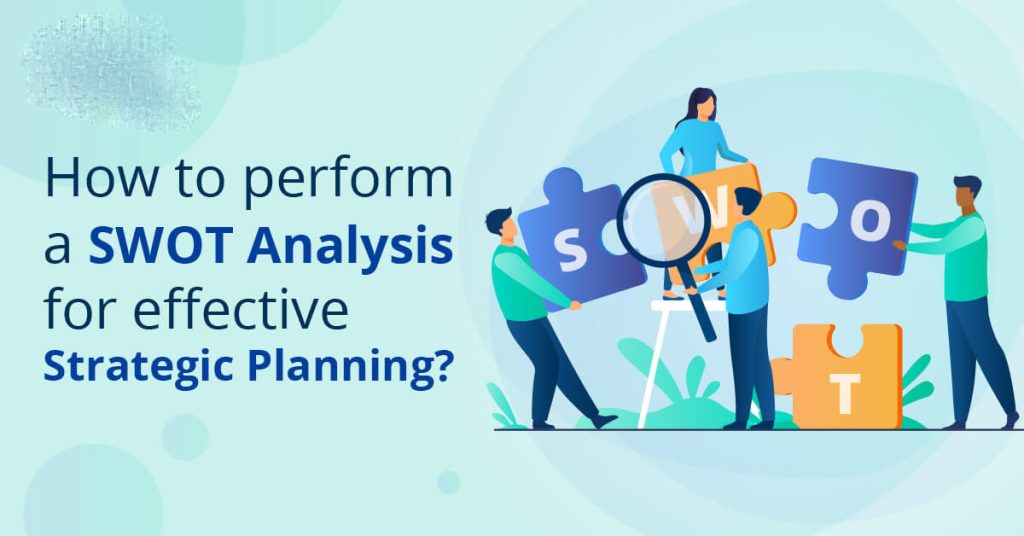SWOT Full Form for Strategic Success

As the business landscape continues to evolve at a rapid pace, the need for effective strategic planning and decision-making tools becomes increasingly crucial. SWOT analysis, a powerful framework that enables organizations to identify their strengths, weaknesses, opportunities, and threats, has emerged as a key player in this arena. By leveraging this analytical tool, companies can develop informed strategies that not only enhance their market positioning but also improve their operational efficiency.
Key SWOT Analysis Points
- Better Decision-Making: SWOT analysis provides critical insight into what makes an organization.
- Economical: Organizations can make optimal use of their resources, simplify the processes, and identify savings by knowing the strengths points and potential weaknesses.
- Customers’ Focus: Through SWOT analysis, one learns about market opportunities and competitive threats. This helps in planning a business’s activities to align with customers’ needs and values.
- Continuous Improvement: SWOT encourages ongoing evaluation of strategies to ensure better they are able to be in a continuous state of adapting to the ever-changing business environments.
- Strategic Planning: This analytical approach provides more accurate forecasting and long-term decision-making and helps the organization gain much-needed insights in uncertain times to improve growth.
In this blog, we are going to discuss the principles of SWOT analysis, its importance in modern business practices, and how organizations can tap into its potential for enhanced strategic success. Join us as we discover valuable insights and practical steps to integrate SWOT analysis into your business strategy!
What is SWOT Analysis?

SWOT Analysis is a planning tool centered on the evaluation of the Strengths, Weaknesses, Opportunities, and Threats of an organization. This technique assists in having a complete understanding of internal capabilities as well as of the external environment in which an organization functions; hence, it enables organizations to make the right decisions and formulate proper strategies.
Components of SWOT Analysis
- Strengths: Determination of internal features or sources that provide a competitive advantage over others. Awareness of strength helps an organization in utilizing them.
- Weaknesses: The reason for understanding weaknesses is that it points out the areas where improvement is needed. Being transparent about weaknesses will allow organizations to address weaknesses beforehand.
- Opportunities: This aspect looks at external factors that could be exploited for growth or improvement. By identifying opportunities, organizations can develop strategies on how to capitalize on market trends that are favorable to the organization.
- Threats: The analysis of external threats enables organisations to know what risks they are exposed to. With threats identified, they devise plans to handle these risks and maintain their market share.
Implementation
After determining the elements of SWOT, the organizations need to take appropriate measures to exploit strengths, improve weaknesses, capture opportunities, and minimize threats effectively.
Benefits of SWOT Analysis
This helps in making sound decisions correctly as it clearly portrays the inside and out through what was shown. For example, the company identified its strength in modern technology while pointing out a weakness in customer services, and thus should improve on the service.
- Cost Efficiency: Organizations can optimize their operations and utilize resources more effectively by analyzing both the strengths and weaknesses. It is possible to save much money through redundant processes by optimizing resource utilization.
- Improved Communication and Collaboration: SWOT Analysis facilitates teamwork where all the departments are involved in making it a comprehensive study. This will bring about transparency and facilitate better strategic alignment throughout an organization.
- Risk Management: Knowing what could pose threats and weaknesses enables the development of strategies that would help minimize risks and enhance resilience as a whole.
- Opportunity Recognition: By assessing the conditions in the market, an organization can be able to recognize new ways for growth and innovation and remain ahead of competitors.
Core Principles of SWOT Analysis

- Focus on Activities: It is important to know what activities are and include the core competencies and processes and how they would add up to being either strengths or weaknesses.
- Link Activities to Costs: The fact that activities and costs go hand in hand makes possible the identification of costly weaknesses, which may then result in targeted improvements and cost cutting.
- Continuous Improvement: Strategy adaptation based on changing conditions requires continuous assessment and feedback to avoid losing the edge.
- Data-Driven Insights: Data analytics coupled with SWOT analysis may make the analysis more profound ,and the oorganisationcan can base strategies on evidence.
- CCross-functional involvement Teams from different functions bring diverse perspectives and insights that enhance the SWOT analysis process.
Steps to Implement SWOT Analysis
- Analyze Current Activities: First and foremost, SWOT analysis involves the analysis of the current activities in terms of processes and practices. Internal audits and stakeholder interviews can be used to assess this.
- Establish Cost Drivers: Factors that influence the organization’s strengths and weaknesses would be determined and recognized as a result of their influences on the profitability and performance.
- Begin Performance Metrics: Identify and track those performance metrics relevant to the established strengths and weaknesses for enabling organizations to monitor their own progress and adapt appropriately.
- Engage Employees: Perception by an employee is important in the SWOT analysis process since it helps with critical information gathering and promotes ownership of the process.
- Use Technology: The use of SWOT Analysis can be improved by making it more profound with the help of software tools and data analytics and making collaboration easier.
Actual Examples of SWOT Analysis

- Technology Firm: A leading technology firm used SWOT Analysis to analyse its market situation. The company realized that it had the strength of having a very good R&D capability, but at the same time, there was a threat of increasing competition. It innovated and remained an industry leader.
- Small Retail Business: The small retail business applied SWOT Analysis to discover the strengths of having strong local customer loyalty and the weaknesses in operational costs. It adopted the cost-cutting measure and increased profitability.
- Non-Profit Organization: The non-profit organization applied SWOT Analysis, which brought into light the strength of community support and weakness in funding. Discovering new opportunities for funding, it could adjust its resource allocation and enhance outreach efforts.
- Global Food Corporation: Multinational food company has applied SWOT Analysis on market trends and consumer preference. It discovered the emerging pattern of health issues (opportunity) while its supply chain management vulnerabilities could be considered as a threat.
- E-commerce Startup: This e-commerce startup realized its innovative marketing strategies (strength) but was facing very high customer acquisition costs which could be considered as weaknesses. The firm leveraged strengths and worked on weaknesses while optimising customer engagement tactics.
Conclusion
SWOT analysis is an effective tool by which organizations can improve strategic planning and decision making to enhance performance as well as support continued growth.
Final Thoughts
SWOT analysis is, hence, a great approach that holds much value for organisations that have to work on their strategic planning and decision-making processes. With the right understanding of strengths, weaknesses, opportunities, and threats; fair resource allocation, and steady efforts towards improvement, a business is able to unlock great potential within its operation process.
From the SWOT analysis applied in your business, you will achieve:
- Higher strategic focus: Identify your niche and leverage your unique strengths to differentiate yourself in the market.
- Better risk management: Get a clear view of potential threats and weaknesses that might be encountered so that you can prepare well for challenges.
- Higher opportunity for growth: Understand market trends and capitalise on them to drive innovation and expansion.
Now is the time to embrace SWOT analysis and experience the transformative effects it can have on your organisation. Take the first step toward effective strategic planning today!
